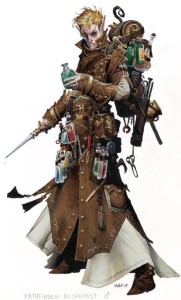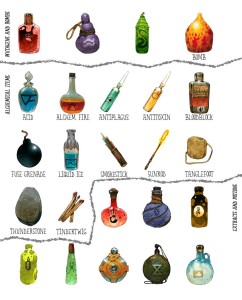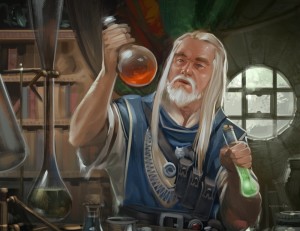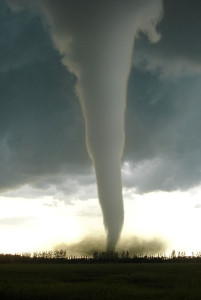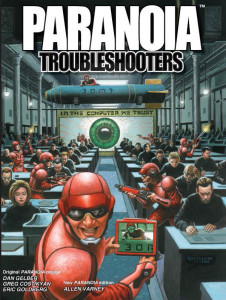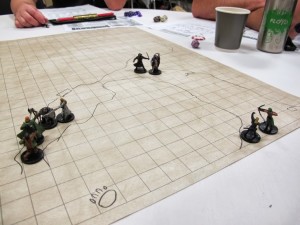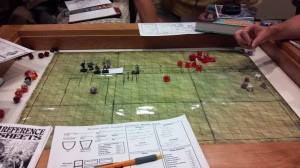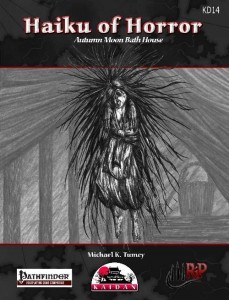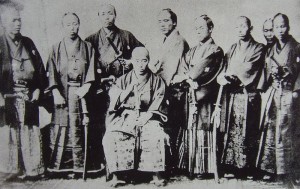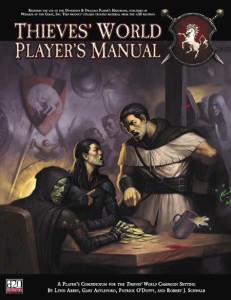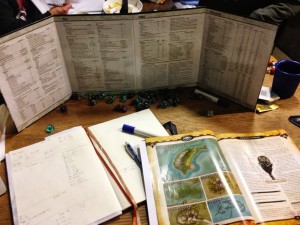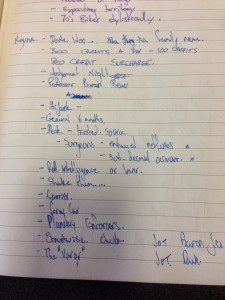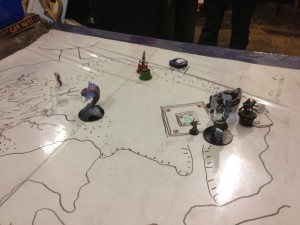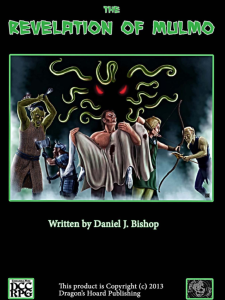 Author: Daniel J. Bishop
Author: Daniel J. Bishop
Publisher: Dragon’s Hoard Publishing
Art: David Fisher
Price: PDF $5.00 – at RPGNow
Pages: 76 (incl. cover)
The Revelation of Mulmo was released several weeks ago from Dragon’s Hoard Publishing. The module is written by Daniel Bishop and comes in at 76 pages, including the covers. The adventure includes descriptions of 60 locations which consume the first portion of the book. The book’s appendix has a large section on patrons, including invoke patron checks, patron taint, spellburn and more. The module is intended for 3-8 4th level Dungeon Crawl Classics characters.
The Revelation of Mulmo is a site-based adventure location making it possible to drop into an already existing campaign world. The adventure also has the potential to return a fallen party member back from the dead. This can be a handy hook for a DCC RPG campaign where death typically isn’t resolved in a quick raise dead or resurrection spell.
The adventure takes place in a fallen elf-hill from battles decades past. Due to temporal oddities some lingering denizens of the hill still think this conflict is in progress. This temporal effect is sure to toy with the characters passing into the elf-hill as well!
The module includes one good, strong hook to get characters vested in the adventure. A creative judge can surely come up with some other hooks to get characters involved. Patrons can make the most unusual of requests sometimes in exchange for their favors!
The elf-hill itself is a rather large expanse of rooms and encounter areas to be explored. The module includes many new creatures fitting in with the DCC RPG mantra of creatures should be mysterious. A few new magical weapons are sprinkled in as well.
A magical sword called Alemourn in the module is a particular favorite. Without revealing too many details, it is another example of how I think magical weapons in DCC RPG should be. Magical weapons in DCC RPG should be something more than just a +1 weapon. The sword grows in power under a some unusual conditions. A fine example of how I think magical weapons should work in this game.
As noted above the appendix includes new patrons for DCC RPG. The patron write-ups do include invoke patron check results, patron taint options, patron spells, and spellburn examples. The patron spells do need written by the judge for their game, but the titles should help get the creative mind moving.
Several maps are included in the module showing the various levels, including very helpful exterior and interior side views. I always find these useful, as while some layouts are quite clear in the designer’s mind, that does not always translate well to the reader without illustration.
The Review
This thing is big and chock full of bits! 60 room descriptions, patrons, magic items, new and twisted creatures, and spells; there is a lot of information here. Compared to many other DCC RPG adventures I have read and reviewed this module is much longer in length and with a lot more material within.
I like this brings another option to the table for returning a fallen character back to the living. While DCC RPG does not have the “easy button” for bringing a character back from the dead, it does encourage question, planar travel, and any other number of Appendix N oriented quests to do just that. Sometimes a judge does not have the time to write their own quest to allow a player to bring a character back. Having another option added to adventures allowing such a thing is a good thing for time starved judges.
The adventure itself is interesting and sure to keep characters on their toes as they make their way through the elf-hill and the encounters within. The toying with time and temporal shifting is interesting and adds an element to the adventure to keep things uncertain and mysterious.
This is not the first adventure by Daniel Bishop that I have reviewed at The Iron Tavern. One thing I can count on in his adventures is the use of a mechanic in a fun and interesting way. An example from this module is the use of spellburn to power a certain effect or ability of an object. I do not want to reveal too much, lest spoil the adventure, but I like how he takes DCC mechanics and works them into an adventure in a way not first thought of.
While this module contains a lot of material for the DCC judge, I fear it may also be its downside. The trend in DCC RPG modules has been short and sweet. Even in my shorter two hour sessions over a VTT (Roll20 and G+ Hangouts), we can make our way through a typical DCC RPG adventure in three or four sessions. I suspect this one would take several sessions longer.
Perhaps it is just the trend already set that biases me towards the shorter modules, but I do have some concern my players would start to become a little weary of the adventure as we carried across many sessions. That isn’t to say any part of the module is “slow” or “boring”. Just I have found attention spans for longer modules is shorter in my DCC RPG games. I think DCC players might expect “bite-sized” adventuring.
I admit, my review is based only on a read through and not an actual play through of the adventure. So the length of adventure comments should be taken with the grain of salt. Sometimes the play through reveals things not expected!
Regardless, there are plenty of items to work with in this adventure. Whether tweaking it to run a little shorter, stealing certain gems from the module (hello 24 random skulls!), patrons, spells, or even just some of the new and unusual creatures. So even if I end up not running this module in its entirety, there are numerous pieces I can use from this adventure that I feel it still has value.
The artwork within the module was done by David Fisher. There are a lot of interesting art pieces inside the module. The color cover of the module with red eyes looking over the party from behind is certainly enough to draw one in!
The Revelation of Mulmo is another impressive module from Daniel Bishop. I continue to enjoy the material he produces for Dungeon Crawl Classics RPG as he explores various reaches of the DCC RPG essence and system!
What do you think?
So what do you think about long modules versus short modules for Dungeon Crawl Classics RPG? Do you want to see more longer modules like The Revelation of Mulmo or would you rather see some shorter ones?

